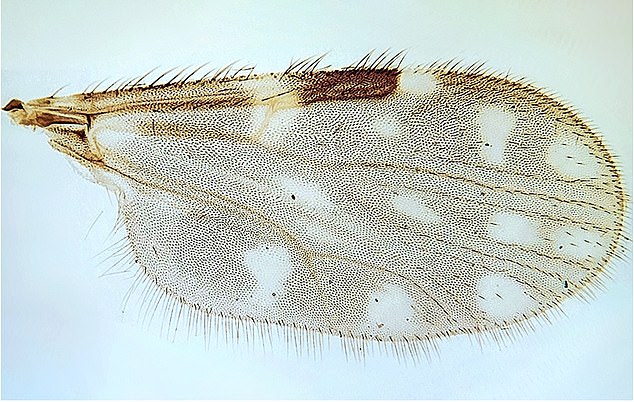Three cases of ‘laziness fever’ have been detected in the popular European tourist destination, the Canary Islands.
Health authorities in the Spanish archipelago, located just 100 kilometres from the African coast, confirmed cases of the oropouche virus, related to the dengue and zika viruses, in three people who had travelled from Cuba.
These cases correspond to a 36-year-old man, a 32-year-old woman from Tenerife and a 52-year-old man from Gran Canaria.
The trio reportedly began suffering from symptoms including fever, diarrhea and joint pain before laboratory results confirmed they had the Oropouche virus.
While all three have responded well to treatment and have not required hospitalisation, authorities said three other cases on the Spanish islands are still awaiting tests.
Health authorities in the Spanish archipelago, located just 100 kilometres from the African coast, confirmed cases of the oropouche virus, related to the dengue and zika viruses, in three people who had travelled from Cuba. In the image: Tenerife
The new cases in the Canary Islands, which are a short direct flight from London, are the latest in a series of cases that have hit the European region in recent months.
According to the European Centre for Disease Prevention and Control (ECDC), at least 19 people have been reported with the virus in Europe in the past two months, not including the most recent cases.
Twelve cases were recorded in Spain, five in Italy and two in Germany.
Although it is known as “sloth fever”, oropouche is not transmitted directly by animals themselves.
Instead, it is spread by small, biting flying insects, such as mosquitoes, which can transmit the disease from sloths to other animals, including people.
Oropouche symptoms usually begin between four and eight days after the bite and in severe cases the disease can lead to meningitis, according to the NHS Travax website.
Although it is potentially life-threatening, the ECDC said fatal outcomes are extremely rare and recovery from the disease is common. In most cases, symptoms disappear within four days.
To date, outbreaks of the virus have been reported in several countries in South America, Central America and the Caribbean.
In 2024, specific outbreaks have been recorded in Brazil, Bolivia, Colombia, Peru and more recently in Cuba, from where the Canary Islands cases recently travelled.
Eighteen of the cases reported in Europe reported recent travel to Cuba and one case in Italy had traveled to Brazil.
According to a report published in the LancetOn July 25, two deaths caused by oropouche were reported for the first time in Brazil, in two young women who had no other underlying health conditions.
Although cases remain low in Europe, more than 8,000 cases have been recorded between January and mid-July this year in Brazil, Bolivia, Peru, Colombia and Cuba.
Due to these high numbers, the ECDC has stated that the probability of infection for EU citizens travelling to or residing in epidemic areas is currently assessed as moderate.
The European authority recommends that those travelling to affected areas use insect repellent and wear long-sleeved shirts and long trousers to reduce the risk of bites.
While experts say the virus is unlikely to “take hold” in nations with colder climates like Britain, it could become a problem for those who travel abroad and then may become ill upon returning to the UK.

There is no vaccine against the disease, which originates in pale-throated sloths, non-human primates and birds.

The pattern of spots on the insect’s wings is characteristic of mosquitoes that transmit sloth virus. Photo: IOC Ceratopogonidae Collection/Fiocruzi
Experts have warned that the spread of the disease could become “unstoppable” due to the lack of vaccines against it.
The United States has also been hit by a series of cases. In total, 21 Americans have been diagnosed with the Oropouche virus in recent weeks.
The US Centers for Disease Control said that, like the European cases, the patients were diagnosed after returning from Cuba.
Twenty of the cases occurred in Florida and one in New York. The most common symptoms were fever, muscle aches, headaches, fatigue and stiffness.
Three patients were hospitalized, but there were no deaths.
The strain behind the recent outbreak was first detected in the small town of Oropouche in Trinidad and Tobago in 1955.
Five years later, during the construction of the Belém-Brasilia highway, a sloth was tested as a carrier of Oropouche.
Within a year, people in the area became sick with the virus and there have since been about 30 outbreaks, all centered in the Amazon basin.
It’s not clear which insects spread the virus in the jungle, where it circulates among sloths, birds and primates, but in an urban setting, mosquitoes and gnats spread the disease among humans.
But due to deforestation and increased urbanization, host animals like sloths are becoming more displaced, causing mosquitoes to feed on humans instead of wild animals.
Rising temperatures caused by climate change have also caused mosquitoes to fly farther, and increased rainfall and flooding provide the perfect breeding ground for biting insects.

